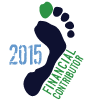I'm interested in getting a sense of how people strike the ground when they run barefoot. Obviously we're not heel strikers, but what does that mean? For instance, up until now, I've been landing on my midfoot and then letting my heel hit the ground next. But after some faster running made my shins flare up, I'm curious how hard your heel is supposed to strike the ground, if at all. (I used to get bad shinsplints running shod).
I've experimented with putting all my weight on the balls of my feet. I let the heels touch the ground, but they just kiss it gently. There's two immediate downsides to this kind of stride: 1) I'm bouncing up and down more, which isn't desirable. 2) I feel like the ball of my foot is actually striking the ground harder than my normal barefoot stride. If I stepped on a stone running this way I wouldn't be able to react as well as I usually do when I am putting my whole foot down.
Does putting 95% of my weight on the midfoot sound like a good barefoot stride? Or do I need to put my whole foot more firmly on the ground? I admit it's possible that I was simply letting my heels hit the ground first without realizing it. Maybe I just need to pay attention more?
I'm interested in any input, thanks!
I've experimented with putting all my weight on the balls of my feet. I let the heels touch the ground, but they just kiss it gently. There's two immediate downsides to this kind of stride: 1) I'm bouncing up and down more, which isn't desirable. 2) I feel like the ball of my foot is actually striking the ground harder than my normal barefoot stride. If I stepped on a stone running this way I wouldn't be able to react as well as I usually do when I am putting my whole foot down.
Does putting 95% of my weight on the midfoot sound like a good barefoot stride? Or do I need to put my whole foot more firmly on the ground? I admit it's possible that I was simply letting my heels hit the ground first without realizing it. Maybe I just need to pay attention more?
I'm interested in any input, thanks!


















